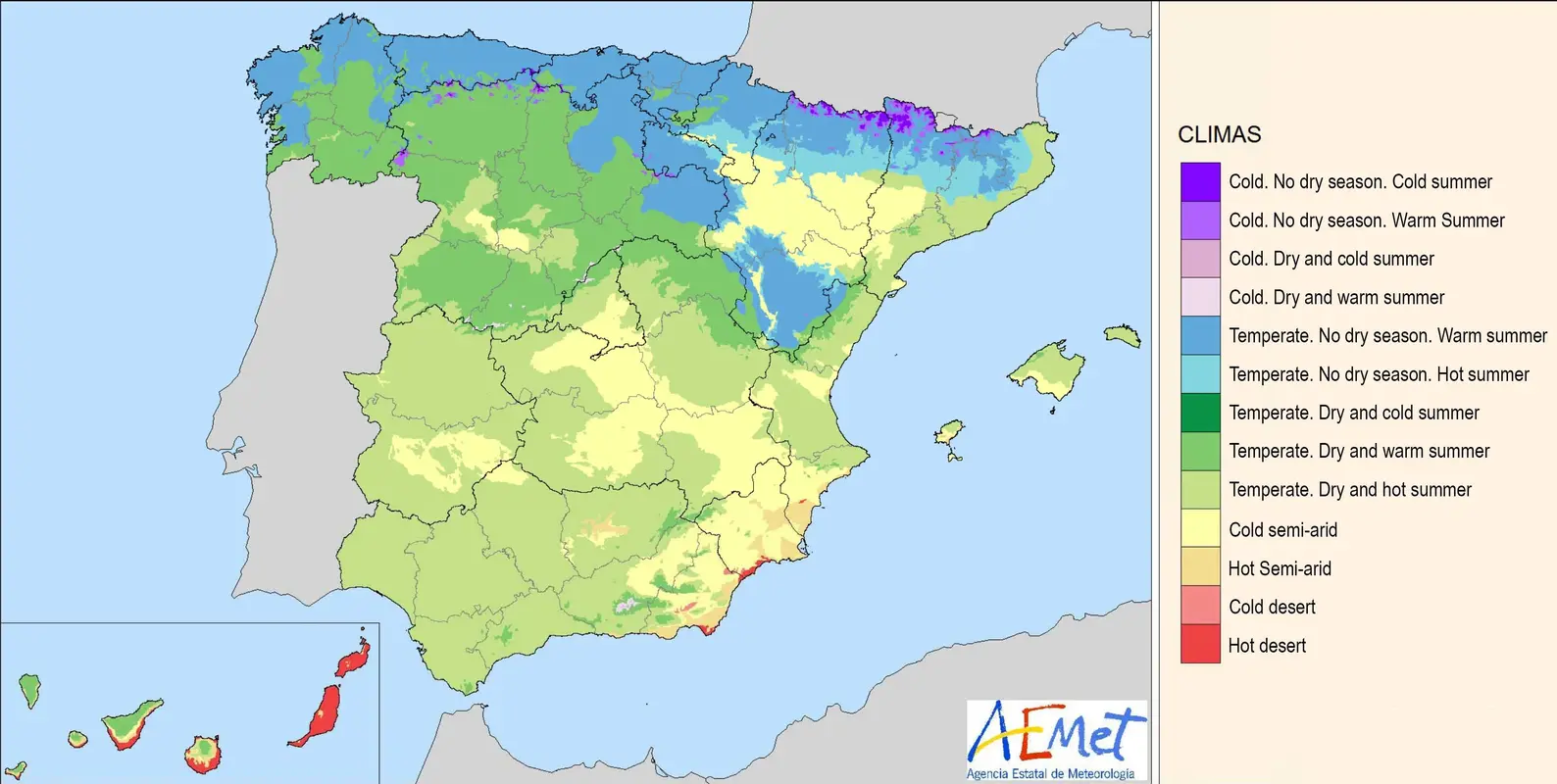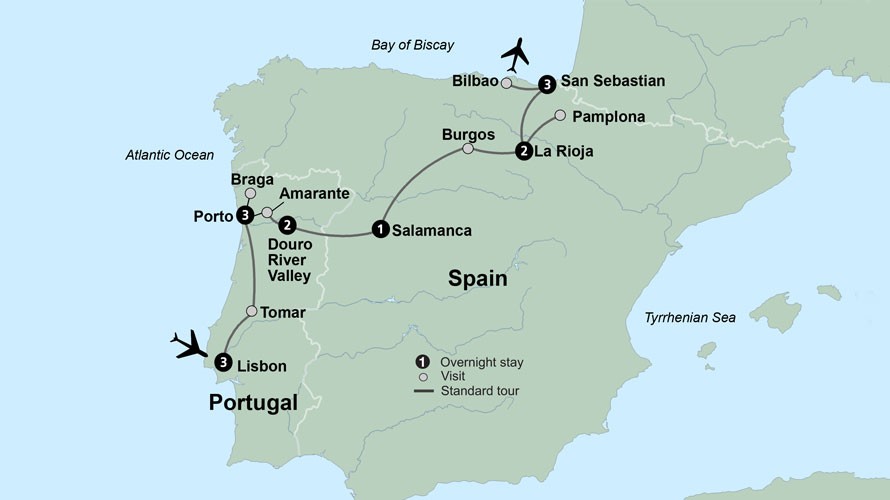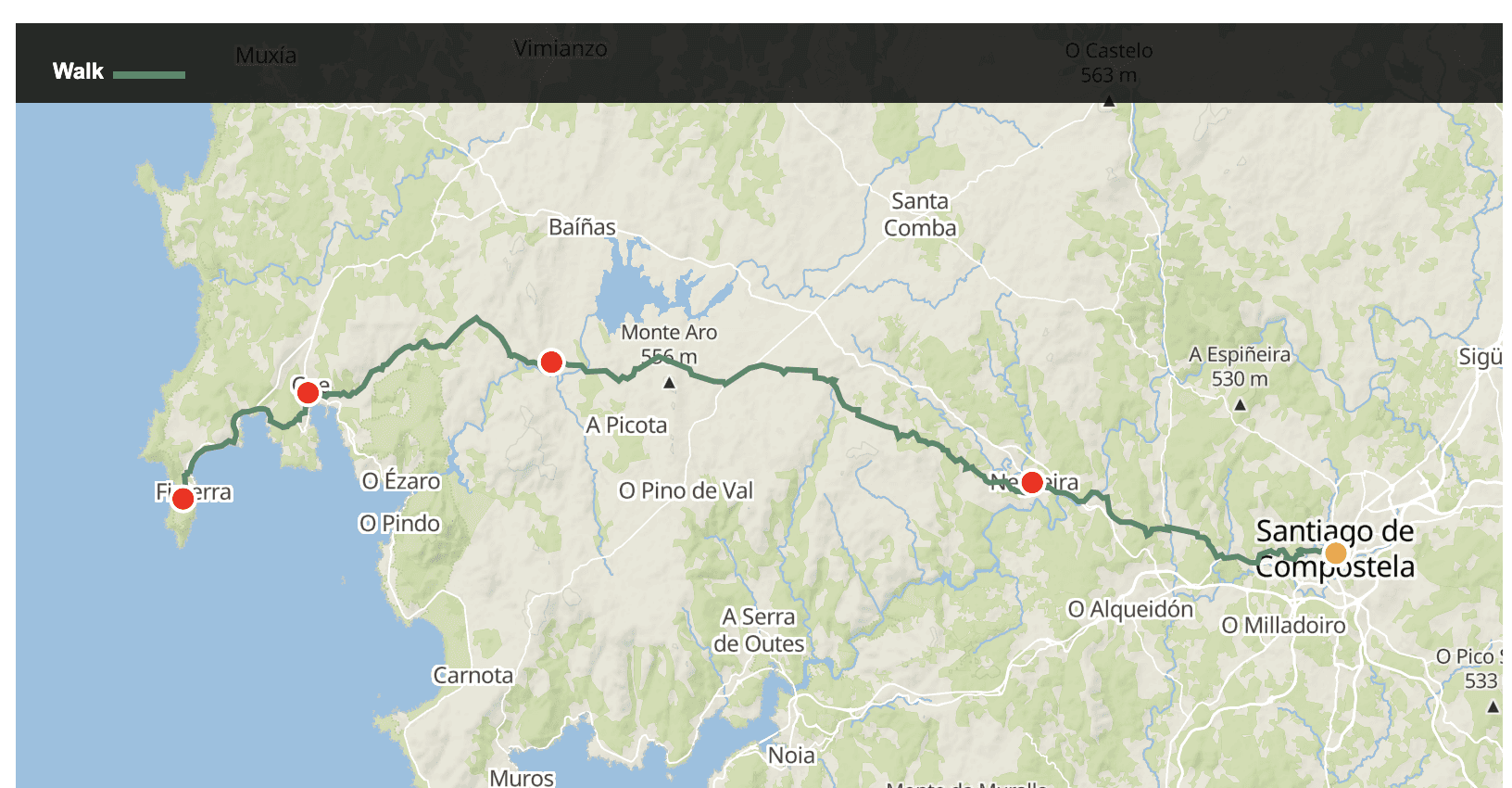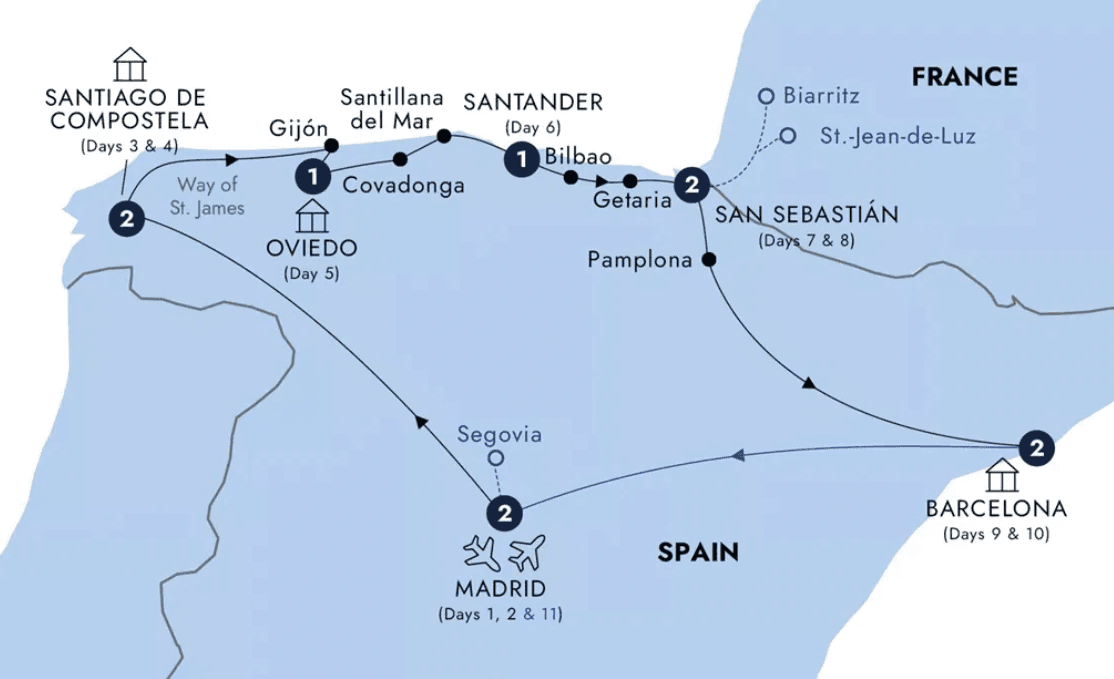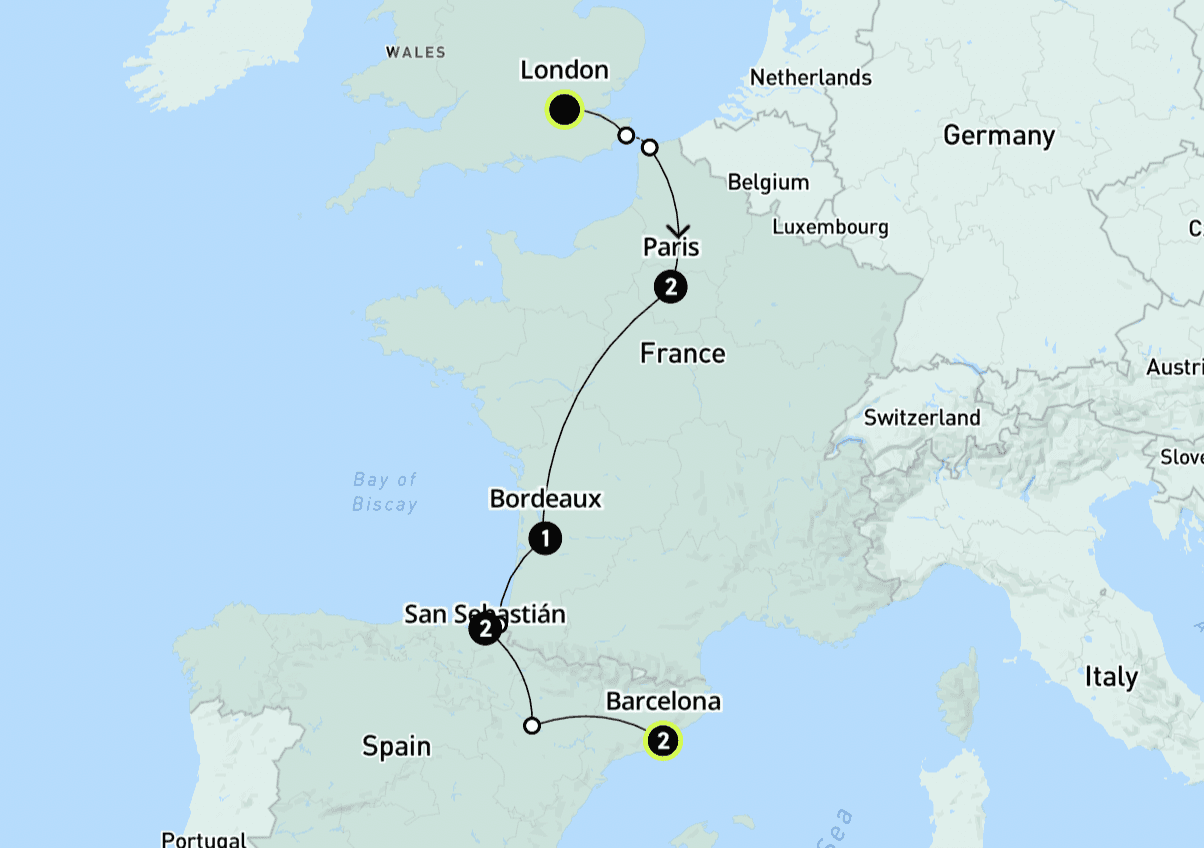Planning a trip to Spain?
Knowing when and where to go is crucial for an unforgettable experience, timing is everything. Backed by data and expert insights, this guide unveils surprising weather trends to help you travel smarter.
Discover which regions shine in summer, where to find warmth in winter, and the best months to avoid crowds.
Ready to unlock Spain’s weather secrets and craft the perfect itinerary?
Keep reading to plan your ultimate Spanish getaway with confidence!

Have you ever dreamed of sipping sangria under the Andalusian sun in winter, or capturing lush green hills in the north for your social feed? Spain isn’t just a destination—it’s a place where every season tells a new story. But here’s the secret: understanding Spain’s weather trends can be the difference between a good trip and one that blows your expectations out of the water.
At Paradiso, I get it—your holiday is more than just time away. It’s about making every moment count, wowing your friends with stories and pictures that say, “I found something incredible.” That’s why I’ve crafted this guide, packed with insights about Spain’s unique weather patterns. You’ll learn where—and when—to go, so every part of your trip feels extraordinary.
Methodology
When planning your holiday, you don’t want to leave things to chance, right? That’s why I’ve done the homework for you, diving deep into the data from:
Spain’s National Meteorological Agency (AEMET): For accurate, up-to-date weather trends.
World Bank Climate Portal: Because climate insights help you make informed choices.
ClimateData.org: To break down the weather month by month for key regions.
Here’s how I approached it:
Focused on What Matters to You: I matched weather conditions with experiences, like festivals, beach days, or that perfect evening stroll.
Kept It Practical: The guide is organized by region and season, so you can plan without the guesswork.
Let’s dive in and make your next Spanish adventure unforgettable—because you deserve a trip that’s as amazing as your imagination.
1. The Canary Islands Are Perfect Year-Round
If you’re dreaming of a winter escape without losing the summer vibe, the Canary Islands are your go-to. With temperatures hovering between 18°C in winter and 24°C in summer, these subtropical islands promise golden beaches and stunning volcanic landscapes no matter the season.
Why You’ll Love It: Forget about unpredictable weather; pack light and soak in uninterrupted sunshine.
Paradiso Pro Tip: For an Insta-worthy shot, hike to the summit of Mount Teide in Tenerife and capture the sea of clouds below.
Added Inspiration: I’ve included must-visit destinations and photo-worthy spots that will have everyone asking, “Where was that?”
2. Andalusia’s Summers Are Scorching, But Winters Are a Dream
Andalusia boasts some of Spain’s hottest summers, with temperatures exceeding 40°C in cities like Seville. But here’s the flip side—its mild winters (around 15°C) make it a dreamy destination for those looking to escape the cold.
Why You’ll Love It: Spring and autumn offer the best weather, with sunny skies and fewer crowds.
Paradiso Pro Tip: Avoid the midday summer heat by exploring the Alhambra at sunrise for cooler temps and magical light.
3. Northern Spain Stays Cool and Lush
Thanks to frequent rainfall, Galicia, Asturias, and the Basque Country remain green and vibrant year-round. Summers here are a refreshing contrast to the southern heat, with average temperatures around 20°C.
Why You’ll Love It: A paradise for hikers, foodies, and those looking for an escape from the sun.
Paradiso Pro Tip: Visit during summer for the best balance of pleasant weather and cultural festivals, like San Sebastián’s Jazz Festival.
4. Central Spain: Extremes Define the Heart of the Country
Madrid and the surrounding central plateau experience sharp contrasts—freezing winters (down to 2°C) and scorching summers (over 35°C). Spring and autumn are your sweet spots for exploring the region comfortably.
Why You’ll Love It: Culture-packed city breaks paired with ideal weather conditions.
Paradiso Pro Tip: Catch Madrid’s cherry blossoms in March for a stunning (and unexpected) photo opportunity.
5. The Balearic Islands Shine in Spring and Summer
The Balearic Islands, including Mallorca, Menorca, and Ibiza, are synonymous with beach bliss. While summers bring warm waters and endless sunshine, spring offers the same charm with fewer crowds and gentler temperatures.
Why You’ll Love It: Perfect for a luxurious seaside escape or vibrant nightlife.
Paradiso Pro Tip: For a tranquil vibe, visit Menorca in May and explore its secluded coves by kayak.
6. Galicia and Basque Country Reign in Autumn
Autumn rains rejuvenate northern Spain’s landscapes, making it a fantastic time for dramatic scenery and harvest festivals.
Why You’ll Love It: Cooler temperatures make it perfect for nature lovers.
Paradiso Pro Tip: Don’t miss the wine harvest in La Rioja—a region with postcard-worthy vineyards and cozy autumnal vibes.
7. Southern Spain Offers Sunshine Almost Every Day
Costa del Sol lives up to its name with more than 300 days of sunshine annually. Winter highs of 16°C and summer peaks of 30°C mean it’s always a good time to visit.
Why You’ll Love It: A weather-safe choice for beach lovers and golfers alike.
Paradiso Pro Tip: Book a stay in Marbella’s old town for boutique charm and sun-soaked alleys.
8. Climate Change is Shaping Spain’s Weather
Spain is warming up—temperatures have increased by +0.26°C per decade since 1959. Summers are hotter, while winters are becoming shorter and milder, particularly in southern and coastal regions.
Why You’ll Love It: Adapting your plans to these changes ensures you stay ahead of the curve.
Paradiso Pro Tip: Travel in spring or autumn to enjoy comfortable weather and vibrant cultural events.
Regional Breakdown: Spain’s Climate Zones
Spain is a land of contrasts, with distinct climatic regions offering unique experiences year-round. Here’s a closer look at how the weather varies across the country’s regions.
Andalusia: The Sunniest Corner of Europe
Best Time to Visit: Spring (March-May) and autumn (September-November) for sunny skies and comfortable temperatures.
Situated in southern Spain, Andalusia experiences a classic Mediterranean climate. Long, hot summers dominate inland areas like Seville and Córdoba, while the coastal zones such as Málaga and Cádiz enjoy cooling sea breezes. Winters are mild, making this region an excellent retreat during colder months. Andalusia’s geography—from its golden beaches to the Sierra Nevada mountains—creates microclimates that enhance its weather diversity.

The Canary Islands: A Subtropical Haven
Best Time to Visit: Anytime, but winter is especially ideal for escaping the UK’s cold and gray.
Lying off the northwest coast of Africa, the Canary Islands boast a subtropical climate with stable temperatures year-round. The eastern islands like Lanzarote and Fuerteventura are drier and more arid, while the western islands, including Tenerife and La Palma, receive more rainfall, particularly in their lush, higher-altitude areas. This climatic stability makes the Canaries a favored destination for escaping harsh winters.

Northern Spain: Green and Mild
Best Time to Visit: Summer (June-August) when the rain eases and temperatures are mild.
The northern coast, stretching from Galicia to the Basque Country, is often referred to as “Green Spain” due to its abundant rainfall. The oceanic climate ensures mild temperatures throughout the year, with cooler summers and wet winters. The Cantabrian Mountains influence the weather, creating misty mornings and lush landscapes that are ideal for those seeking a break from Spain’s hotter, drier regions.

Central Spain: Extremes in the Heartland
Best Time to Visit: Spring (April-May) or autumn (September-October) for pleasant temperatures and vibrant cityscapes.
The central plateau, or Meseta, encompassing Madrid, Toledo, and Castile-La Mancha, is defined by a continental climate. Summers here are scorching, with little relief from the dry heat, while winters are cold, with frost and occasional snow. Spring and autumn are transitional seasons, offering the most moderate weather. This region’s elevation amplifies temperature swings, adding to its dramatic climate.

The Balearic Islands: Mediterranean Serenity
Best Time to Visit: Late spring (May-June) or early autumn (September-October).
Nestled in the western Mediterranean, the Balearic Islands—including Mallorca, Menorca, and Ibiza—are characterized by warm, sunny summers and mild, rainy winters. Coastal breezes temper the heat, particularly on smaller islands like Menorca. The mountainous interiors of Mallorca create localized weather variations, with slightly cooler and wetter conditions at higher elevations.

Eastern Spain: The Warmth of Valencia and Catalonia
Best Time to Visit: Late spring (May-June) or early autumn (September-October).
Eastern Spain, home to Valencia, Catalonia, and the Costa Brava, enjoys a Mediterranean climate with hot, dry summers and mild winters. Rainfall is infrequent but tends to peak in the autumn months, particularly along the coastline. The Pyrenees in the far northeast introduce cooler and wetter conditions at higher altitudes, contrasting sharply with the sunny beaches below.

The Pyrenees: A Mountain Refuge
Best Time to Visit: Winter for skiing or summer for hiking and outdoor adventures.
The Pyrenees, stretching along the border with France, experience an alpine climate that varies with elevation. The lower valleys enjoy cool summers, while higher altitudes see heavy snowfall in winter, making this region a hotspot for skiing and mountaineering. The region’s rugged beauty is accompanied by rapidly changing weather, with frequent afternoon thunderstorms in summer.

Galicia and Asturias: Atlantic Charm
Best Time to Visit: July and August for the driest conditions and vibrant local festivals.
The northwestern corners of Spain, encompassing Galicia and Asturias, are defined by their temperate maritime climate. Frequent rainfall keeps the landscapes green and vibrant, while summers are warm but rarely hot. The region’s proximity to the Atlantic Ocean moderates temperatures year-round, creating a distinctive climate that feels worlds apart from Spain’s drier southern regions.

Month-by-Month Weather Across Spain: Plan Your Perfect Adventure
Spain’s diverse climate shifts dramatically through the seasons, offering unique experiences every month. Here’s a detailed guide to help you choose the ideal time for your Spanish getaway.
January
January is Spain’s coldest month, especially in inland areas like Madrid, where temperatures drop to around 2°C. Coastal regions, such as Andalusia and the Balearic Islands, stay milder, with averages around 12°C–15°C. The Canary Islands remain sunny and warm, hovering around 18°C, making them the perfect winter escape.
February
Similar to January, February’s weather varies greatly. Snow blankets the Pyrenees and Sierra Nevada, while the Costa del Sol offers sunny skies and highs of 16°C. The Canary Islands continue to shine as Europe’s warm-weather refuge. Rainfall increases slightly in the north, but overall, February is a great time to visit southern Spain.
March
Spring begins, bringing warmer temperatures and blossoming landscapes. Andalusia sees comfortable days around 18°C, while Madrid and central Spain average 12°C–15°C. Rain is more frequent in the north, but sunny breaks make it a lovely time for exploration. Festivals like Valencia’s Las Fallas add to March’s charm.
April
April offers mild weather across much of Spain, with highs of 20°C in central and southern regions. Rain showers in the north and Galicia keep the landscapes lush. It’s a fantastic month for city exploration in Madrid, Seville, or Barcelona, with pleasant temperatures and fewer crowds.
May
One of the best months to visit Spain, May brings warm days and blooming flowers. Southern Spain averages 22°C–25°C, while the northern coast enjoys mild 18°C temperatures. Rain decreases significantly, making it a great time for outdoor adventures. The Balearic Islands are warm enough for beachgoers without the summer crowds.
June
June marks the start of summer, with coastal regions reaching 25°C–28°C and central Spain nearing 30°C. The Canary and Balearic Islands are idyllic, with warm seas and sunny days. The north offers a pleasant retreat for those who prefer milder temperatures. Festivals and beach activities dominate this vibrant month.
July
July is peak summer, with temperatures exceeding 35°C in central Spain. Coastal areas, especially in the north, remain cooler at 25°C–28°C. The Canary Islands stay comfortable with highs around 24°C. It’s a fantastic month for beach vacations, though inland cities can feel stifling.
August
Spain’s hottest month, August sees similar patterns to July. Southern and central regions can exceed 40°C, while the Balearic and Canary Islands remain balmy at 28°C–30°C. Northern Spain is a popular destination for its cooler weather and stunning coastal landscapes.
September
Temperatures begin to cool, especially in northern and central Spain. Coastal areas enjoy warm seas, while southern Spain remains hot, averaging 30°C. Rain begins to return to Galicia and the Basque Country. It’s a great month for a quieter beach getaway or vineyard tours in La Rioja.
October
Autumn takes hold, with cooler temperatures and more frequent rain in the north. Southern Spain remains warm at 25°C, while central regions drop to a mild 20°C. Festivals and food events make October an excellent time for cultural travel.
November
November is cool and quiet, with rain more common across Spain. The Canary Islands remain warm, while Andalusia averages around 15°C. Northern regions see highs of 10°C–12°C. It’s an ideal month for exploring cities without the crowds.
December
Winter sets in, with cold temperatures inland and in the Pyrenees, where snow attracts skiers. Coastal southern Spain stays mild at 15°C, and the Canary Islands continue to offer warm weather, making them a favorite holiday escape.
Your Next Adventure Awaits
Spain’s climate is as diverse as its culture, offering something extraordinary for every type of traveler. Whether you’re drawn to Andalusia’s warm winters, the lush greenery of Galicia, or the year-round sunshine of the Canary Islands, knowing the best time to visit makes all the difference. By understanding Spain’s regional and seasonal weather trends, you can plan a trip that’s not only unforgettable but perfectly suited to your style.
At Paradiso, we believe every holiday should exceed expectations. Now it’s your turn—take what you’ve learned here and start crafting a Spanish getaway that’s as extraordinary as you are. From savoring spring blooms in Seville to escaping the UK’s winter chill in Tenerife, Spain has the magic to create memories that last a lifetime.
Share Your Story: Been to Spain? Tell us your favorite destinations or weather surprises in the comments below!
Share your thoughts!
Recent Posts



